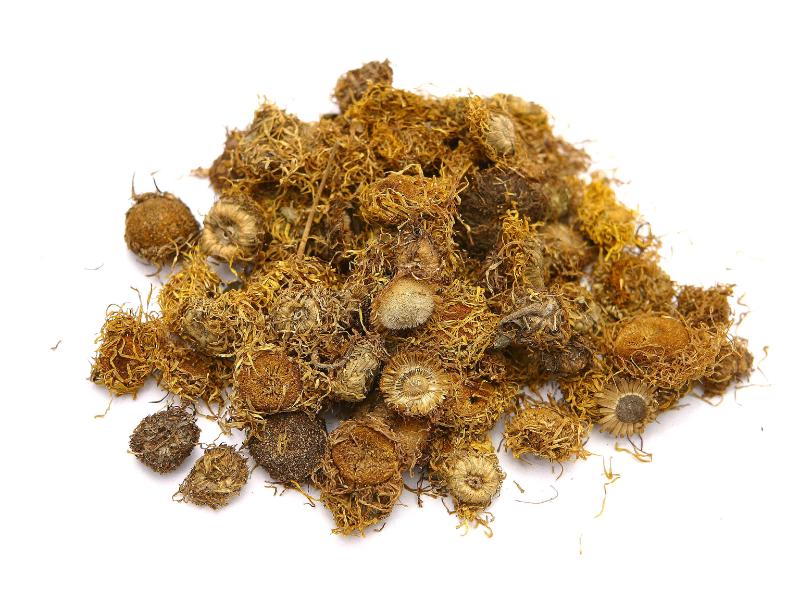Search in medicinals
Inulae Flos
Inula flower
旋覆花 〔旋覆花〕 xuán fù huā

Alternate English names: elecampane flower
Alternate Chinese names: 金沸花 jīn fèi huā
Kingdom: Plant
Origin in PRC Pharmacopoeia: Inula britannica L.; Inula japonica Thunb. (PRC Pharmacopoeia)
Origin in unofficial sources: Inula britannica L. var. chinensis (Rupr.) Reg.; Inula linariaefolia Turcz.; Inula britannica L.*; Inula chrysantha Diels; Inula helianthus-aquatilis C.Y. Wu ex Ling; Inula helianthus-aquatilis C.Y. Wu ex Ling subsp. hupehensis Ling; Inula japonica Thunb.*
Use: Medicinal
Category: Phlegm-transforming cough-relieving panting-calming agents / Phlegm-transforming agents
Properties: Bitter, acrid, salty; slightly warm.
Channel entry: Lung and stomach channels. (some sources add spleen and large intestine channels.)
Actions and indications:
- Transforms phlegm and calms panting: Repletion patterns of panting and cough with copious phlegm.
- Downbears counterflow and checks vomiting: Stomach qì ascending counterflow, manifesting in belching and vomiting.
- Additional uses: Xuán fù huā can be used to quicken the blood and free the network vessels to treat pain in the chest and rib-sides. For this, it is combined with Xiāng fù (香附 Cyperi Rhizoma, cyperus [rhizome]).
Dosage and method: Oral: 3–10g, decocted in a cloth bag to prevent its hairs from irritating the throat and stomach, causing coughing, choking, or vomiting.
Warnings: Contraindicated in yīn vacuity taxation cough and in damage to liquid with dry cough. It must be decocted in a cloth bag because it has hairs that irritate the throat.
Product description: These flowers are spherical, with a diameter of 1–2 cm. The involucre is composed of numerous lanceolate or linear imbricate bracts in five layers. The flowers are dull yellowish green. The outer layer is a ring of ligulate flowers.
Quality: Large, golden flowers with white hairs and without stalks are the best.
Production area: Hénán, Jiāngsū, Héběi, Zhèjiāng, ānhuī, and Hēilóngjiāng.
Etymology: The name xuán fù huā 旋覆花 is explained as the flower (huā 花) that turns back (xuán 旋) to cover (fù 覆) stem.
Back to search result Previous Next